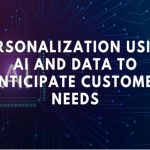 Artificial intelligence (AI) is transforming various industries and changing the way we live and work. However, as AI systems become more complex, the need for transparency and accountability in their decision-making processes is becoming increasingly important. This is where Explainable AI (XAI) comes in. An emerging field of AI that focuses on creating AI systems that can explain how they arrived at their decisions and recommendations in a way that humans can understand. In this article, we will explore the basics of AI and XAI. And why XAI is crucial for building trust and adoption of AI technologies.
Artificial intelligence (AI) is transforming various industries and changing the way we live and work. However, as AI systems become more complex, the need for transparency and accountability in their decision-making processes is becoming increasingly important. This is where Explainable AI (XAI) comes in. An emerging field of AI that focuses on creating AI systems that can explain how they arrived at their decisions and recommendations in a way that humans can understand. In this article, we will explore the basics of AI and XAI. And why XAI is crucial for building trust and adoption of AI technologies.
What is explainable AI, or XAI?
Explainable AI is a set of procedures and techniques that enables consumers to comprehend and believe the output produced by machine learning (ML) algorithms used in artificial intelligence (AI). Users, operators, or developers may be the target audience for the explanations that go along with AI/ML output.
These explanations help solve issues and problems with user adoption, governance, and system development, among other things. The key to AI’s capacity to gain the trust and confidence required in the marketplace to encourage widespread AI adoption and benefit is its “explainability.” Trustworthy AI and responsible AI are two further connecting and developing initiatives.
Why does explainable AI matter?
An enterprise must fully comprehend the AI decision-making processes with model monitoring and accountability. In order to avoid blindly relying on them. Humans can benefit from explainable AI by better comprehending and explaining machine learning (ML), deep learning, and neural networks.
Neural networks used in deep learning are some of the most difficult for a person to grasp. We usually see ML models as “black boxes” that are impossible to read. Bias, frequently based on race, gender, age, or region, has long been a problem in the development of AI models. Moreover, production AI’s compliance, legal, security, and reputational concerns are reduced.
One of the key prerequisites for implementing responsible AI is explainable AI. Which is a methodology for the large-scale implementation of AI methods in actual organizations. Organizations must integrate ethical principles into AI applications and processes by creating AI systems based on trust and transparency in order to support the responsible adoption of AI.
Why Explainability Matters?
AI has the capacity to automate judgments, and such decisions can have both favorable and unfavorable effects on businesses. Understanding how AI makes judgments is crucial, just like when a business hires decision-makers.
Many businesses want to adopt AI, but many are hesitant to do so since they do not yet trust the model to make more important judgments. This is made easier by explainability, which offers insights into the decision-making processes of models.
How is explainable AI implemented?
There are four principles that empower explainable AI (XAI), according to The U.S. National Institute of Standards and Technology (NIST). These include an explanation, meaning, explanation accuracy, and knowledge limit.
According to these criteria, explainable AI systems need to provide concrete evidence, understandable explanations, correct and reliable information, and is providing information on what it is intended to do.
Explainable AI benefits
There are various benefits to using and developing explainable AI:
Operationalize AI with trust and confidence
Explainable AI can enable businesses to develop confidence in using production AI. It also assists in ensuring that AI models are comprehensible and interpretable. Finally, it enables businesses to model clarity and traceability while streamlining the model evaluation process.
Speed time to AI results
XAI can also help monitor and manage AI models systematically to improve business results. Under this, it can evaluate and enhance model performance over time, and adapt model development initiatives based on the ongoing evaluation.
Mitigate risk and cost of model governance
Finally, XAI has the ability to keep AI models transparent and comprehensible. It can aid in controlling risk, compliance, and other regulations, together with reducing manual inspection costs and overhead as much as possible. It also reduces the chance of unintentional prejudice.
Five ways explainable AI can benefit organizations

1. Increase productivity
Explainability-enhancing techniques can more rapidly identify mistakes or areas for improvement. Making it simpler for the machine learning operations teams in charge of overseeing AI systems to properly monitor and manage AI systems. Technical teams can confirm whether patterns revealed by the model are generally applicable and relevant to future predictions. The other possibility is whether the AI model instead reflects exceptional or abnormal historical data by studying the particular features that lead to the model output.
2. Building trust and adoption
Consumers, regulators, and the general public must all have faith that the AI models making critical choices are doing so in a fair and accurate manner. Similarly, even the most advanced AI systems will be rendered useless if the intended audience is unable to comprehend the rationale behind the provided recommendations.
For example, sales personnel are more likely to rely on their instincts than an AI tool whose recommended next-best activities appear to emanate from a mysterious black box. Sales professionals are more likely to act on a recommendation from an AI program if they understand why it was made.
3. Discovering interventions that generate value
Companies can uncover business interventions that would otherwise go undetected by breaking down a model’s operation. In some instances, a forecast or recommendation’s deeper knowledge of why it was made can be even more valuable. For instance, while a forecast of customer attrition in a certain market segment may be useful in and of itself, an explanation of why the churn is probable might assist a business to determine the best course of action.
4. Ensuring AI delivers value to the business
XAI can also provide perspective on what kind of AI model is best to integrate into the business process. The business team may verify that the desired business aim is being realized. And identify instances where something was lost in translation when the technical team can describe how an AI system operates. This ensures that an AI application is configured to provide the value that is requested.
5. Reducing regulatory risks and other factors
Explainability AI assists businesses in reducing risks. Even unintentionally transgressing ethical standards can spark considerable public, media, and governmental scrutiny of AI systems. The technical team’s explanation and the anticipated business use case can be used by legal and risk teams to validate that the system complies with all applicable laws and regulations and is consistent with the company’s internal policies and values.
What problem(s) does explainable AI solve?
The results of many AI and ML models are thought to be illogical and opaque. The trust, development, and adoption of AI systems depend critically on our ability to reveal and explain why particular paths were taken or how outputs were obtained.
Operators and users can get insight and observability into these systems for optimization. This is possible by utilizing transparent and sound reasoning by shedding light on the data, models, and processes. Most importantly, explainability makes it easier to disclose any flaws, biases, and hazards so they can be later reduced or eliminated.
How businesses can make AI explainable
Building an explainability framework and acquiring the appropriate enabling technologies will put organizations in a better position to fully benefit from deep learning and other developments in AI.
It is advisable for enterprises to begin by listing explainability as one of their guiding principles for responsible AI. Then, businesses can put this principle into practice by creating an AI governance committee. In order to establish standards and guidelines for AI development teams, including instructions for use-case-specific review procedures. And by making the right investments in talent, technology, research, and training.
Establish an AI governance committee to guide AI development teams
Creating an AI governance committee entails choosing its members and laying forth its objectives. AI use cases may be difficult to explain and analyze for risk, necessitating knowledge of the business goal, target audience, technology, and any relevant legal constraints.
Firms will want to gather a cross-functional group of experienced individuals, including business executives, technological specialists, and experts in law and risk management. The organization can assess whether the justifications created to support an AI model are clear and useful for various audiences by bringing in a variety of internal and external perspectives.
The AI governance committee’s main duty will be to establish criteria for AI explainability. Effective AI governance committees frequently create a risk taxonomy that we may use to categorize the sensitivity of various AI use cases as part of the standards-setting process. The taxonomy contains links to instructions on standards and expectations for various use scenarios. The taxonomy also makes clear when referral to a review board or legal counsel may be necessary.
Invest in the right talent, explainability technology, research, and training
It is critical for businesses to acquire the best talent, invest in the best tools, perform active research, and maintain training given the speed at which technical and legal change is occurring in the explainability domain.
High-performing companies create a personnel strategy to support enterprise-wide AI governance. These businesses look to hire legal and risk professionals who can interact with the company and engineers in a meaningful way. To understand the relevant laws, satisfy customer expectations, and “future-proof” their core products as the law changes.
The goal of explainability technology investment should be to obtain the right tools for addressing the demands that development teams identified during the review process. For instance, more sophisticated tools might offer a solid justification in a situation where teams would otherwise have to compromise accuracy. Because they can consider the context in which the model is being deployed, including the intended users and any legal or regulatory constraints, customized solutions can sometimes be more expensive up front but pay off over time.
Legal and regulatory requirements, consumer expectations, and industry conventions are all changing quickly, necessitating continual research. To ensure ongoing learning and knowledge development, AI governance committees will want to actively monitor and carry out their own research in this area. In order to guarantee that workers across the firm are aware of and competent in using the most recent advancements in this field, the committee should also organize a training program.
How to use explainable AI to evaluate and reduce risk
Data networking allows AI to advance significantly, without concern for discrimination or human bias. This is because of its clearly defined protocols and data formats. Applications of AI can be well-bounded and ethically accepted when tasked with neutral problem areas like troubleshooting and service assurance.
To identify and prevent AI washing, it’s imperative to ask the AI model provider several fundamental technical and operational questions. The level of detail in the responses, like with any due diligence and procurement activities, might offer crucial information. Answers may need some technical interpretation, but they are nevertheless advised to assist verify the validity of vendors’ statements.
FAQs
What is explainable AI? What is the core concept behind it?
Life-or-death decisions that people desire to make with AI’s assistance are the driving force behind the development of XAI. People won’t trust the technology, though, until “black box” problems are present.
Beyond neural networks, machine learning, and AI technologies, there is a serious issue: trusting neural networks. We currently have to make crucial judgments without having a complete understanding of how AI operates. Explainabe AI should be able to resolve this problem.
How can we build explainable AI?
We may use goal trees to create AI or SI that can justify their activities. In order to enable the computer to “explain” its activities, you must keep track of your movements as you walk up and down the tree.
A wide range of cognitive abilities, including self-awareness, theory of mind, long-term memory and memory retrieval, semantics, etc., are necessary for human-level explainability. What the AI can perform determines what it can explain. Which exponentially connects to the skills humans develop and put into use.
Where do you see XAI (Explainable AI) in the next 5 years?
The development and advancement of Explainable AI technologies will represent the next stage of artificial intelligence. When utilized throughout a variety of new industries, they will grow to be more intelligent, flexible, and agile. With its coding and design, XAI is becoming more human-centric.





